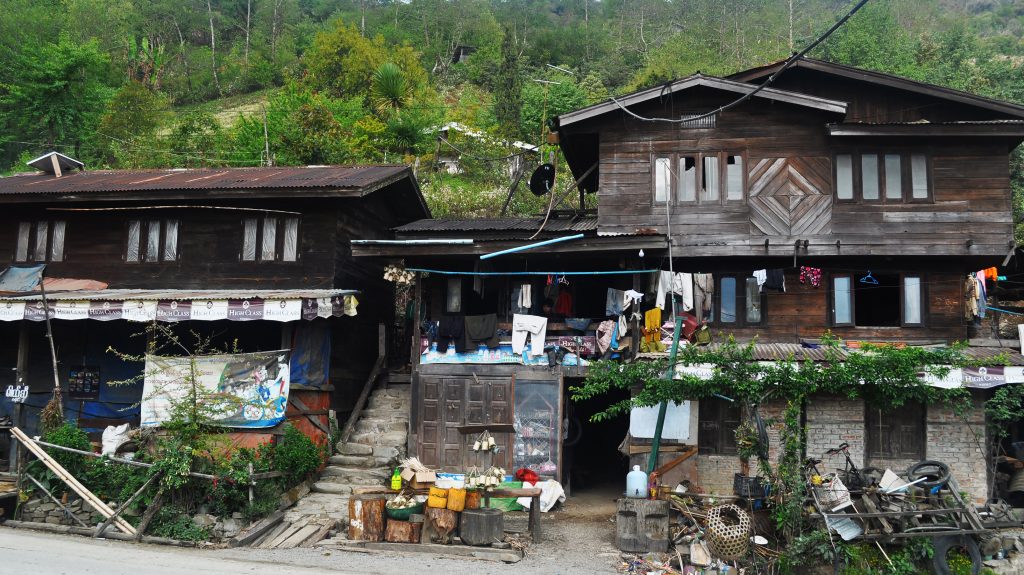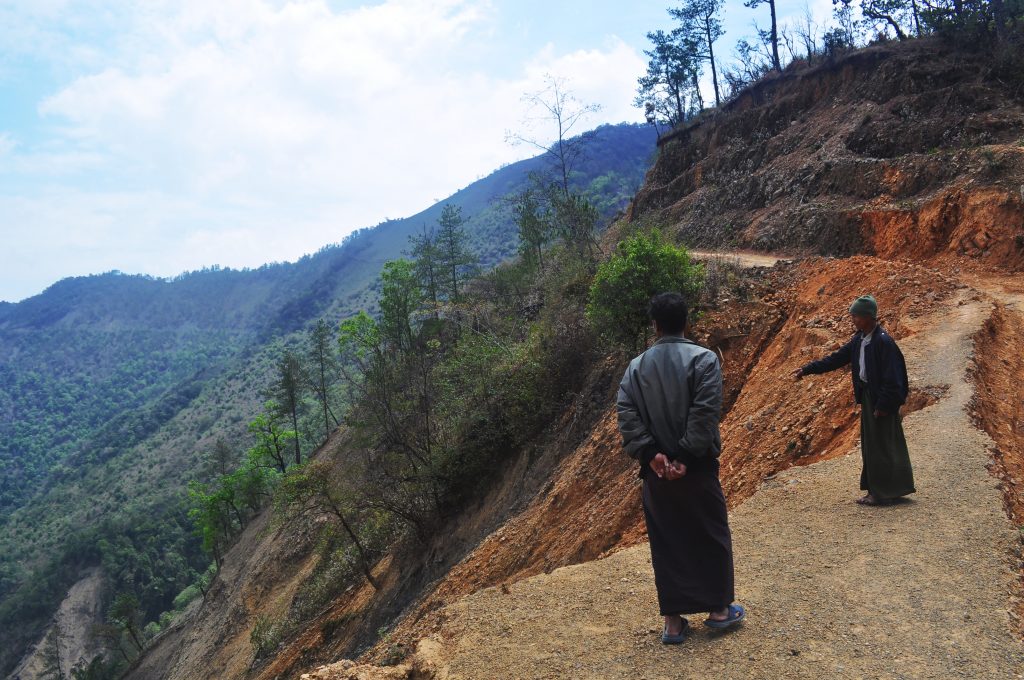Elizabeth Tomenko, ADRA International’s Emergency Programs Assistant reports on her recent visit to Kalay in the Sagaing Region and up in the Chin Hills visiting the project sites of ADRA Myanmar’s emergency response to the 2015 Myanmar Flood Crisis:

“I will never forget July 27 because on that day people were crying, ‘Save me!’ People waited on rooftops shouting and crying, ‘Save us, save us!’” The leader of the new Nat Nan village near Kalaymyo, Sagaing Division, Myanmar covered his face with one hand to conceal his tears, and stepped away from his chair to recompose himself.
The emotion and vulnerability surprised me coming from this weathered tough welcoming patriarch, but it re-emphasised the trauma, chaos, and fear that stemmed and lingered from the unprecedented flooding and landslides in the region nine months earlier.
Through my guide and translator, the leader continued to share. When the flood first happened, they couldn’t prepare much. It was very fast. The old Nat Nan village bordered the river, and nineteen houses by the edge were swept away. The main road in the village disappeared and became a torrent. People took shelter on remaining roofs as the water level rose. The community got a small wooden boat, and took people away to dry ground, four people at a time. The boat overturned once, because the current was strong and the water was swirling with logs and debris swept down from the hills. Eighty percent of the village moved to a new location, farther from the river, and started over.
Earlier this month I visited four villages, met with several dozen residents, and saw how communities are recovering, rebuilding, and reflecting following the events of Cyclone Komen last year, the scale of which had never before been seen in living memory.

Months earlier, the cliff I stood near the edge of had extended into a cash-crop orchard of oranges and coffee. Now, on a Tuesday morning in April, it was a gaping valley of rocks and clay. Over eighty percent of the villages’ groves had been lost in the landslides, I was told. In other places, where avocado, peach, and banana trees grew abundantly, community members came together, barn-raising style, but to take apart houses, churches, and schools board by board, move them to safer ground, and start over. Along the paths, this movement was on foot. One man passed us going the opposite direction, a thick leather strap on his forehead, bearing on his back the weight of a large flat stone the size of his torso.
Like Nat Nan village, many communities had an old location, flooded and largely abandoned, and a new location with the same name, of temporary shelters and buildings half-built. In some places, after the feet of mud had dried, they believed it simply was not worth it to dig their homes and materials out, and resettled elsewhere. For many, crops and farmland were destroyed, and for some fear was the primary concern – of being too close to the cliff’s edge, too far down in the valley near the river, too vulnerable to what nature might do next. In one village I was told the government had mandated that everyone relocate.
In some of the remotest affected communities, ADRA was the first or only international NGO to respond to this historic flooding in western Myanmar.
Early on where bridges were washed out and there was no way to cross the engorged river, ADRA used a zipline to transport much-needed food and emergency relief items to affected communities. Stranded villages could use the zipline to cross, as well. Volunteers from local churches and schools helped participate in the distributions. In addition, a large focus was on assisting farming families to rebuild their crops and livelihoods that were destroyed, and on building or repairing latrines and water supplies.
Cash transfers and cash-for-work programs were used extensively, helping to rebuild important infrastructure, such as roads, canals, and schools, while providing much-needed income for affected families. One community told me that it would take over two years to restore their fields to a useable condition to again grow sunflowers, peanuts, and rice, so other sources of income are needed in the meantime. One family used the cash assistance to buy a solar battery to provide light for their children to study, saying that education is the only thing that can change their country to be a better place. Buying candles to burn every night was getting too expensive, but now they have another way. Other families used the cash to pay for food, seeds, building materials, school fees, and household necessities. Over 15,000 people were assisted through these programs in the affected communities.
When I left Kalaymyo to return to a larger city, an older Burmese woman sat next to me on the deafening, twin-engine airplane. After she motioned for me to demonstrate how to fasten her seatbelt, after trying unsuccessfully to place the buckle into the release lever, I knew again that I had been someplace special. Someplace that not many people from outside get to see, and someplace that many people have never left. “The only people from outside who come here work for NGOs,” my guide said.
Written By: Elizabeth Tomenko, ADRA International Emergency Programs Assistant
Photo: © 2016 ADRA | Elizabeth Tomenko





